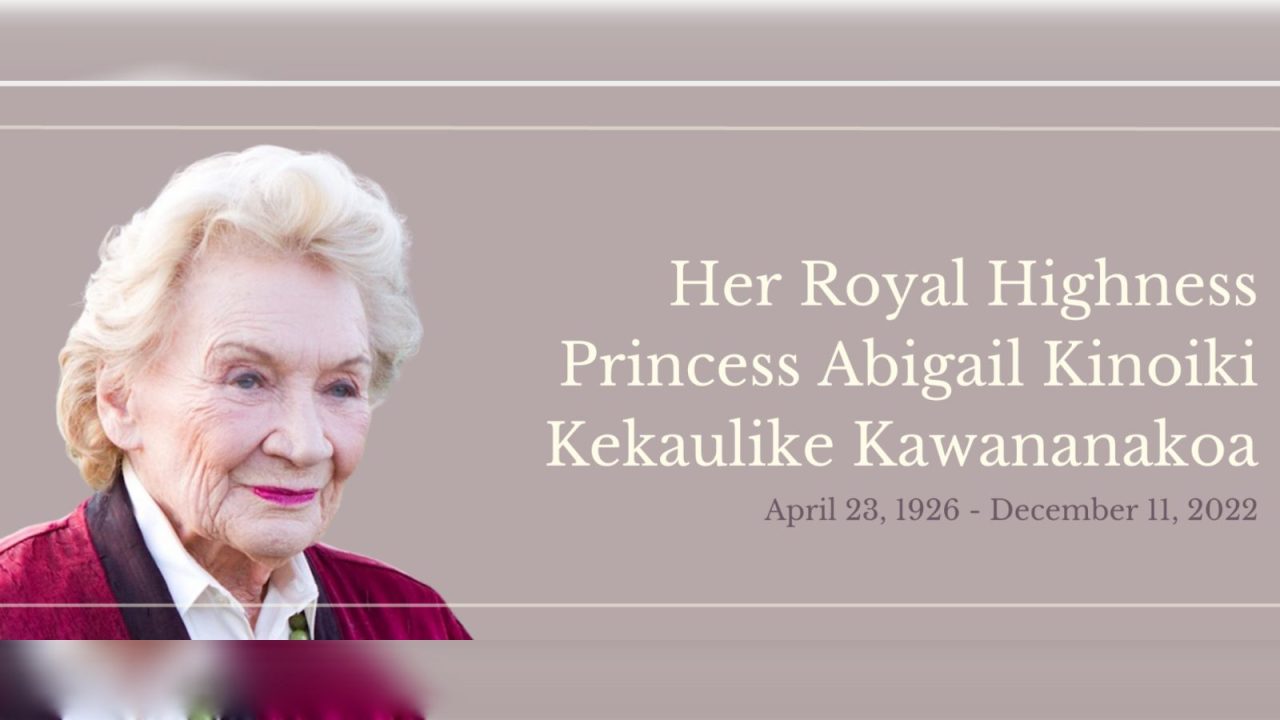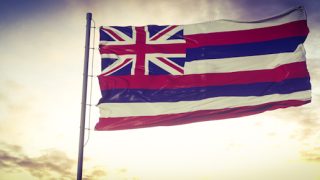After a year since HRH Princess Abigail Kawānanakoa died, the settlement of her estate has been finalized. This is significant to Native Hawaiians as Princess Abigail was modern Hawaii’s last direct connection to the royal family of Hawaii. She left behind considerable wealth that will support Native Hawaiian causes. But that isn’t all as Princess Abigail was a fascinating person who’s life had many twists and turns, including the love of horses. She also loved helping others with her fortune. Before the settlement was reached, there was much concern over how much would go to these important causes and how much to her wife since 2017, Veronica Gail Kawānanakoa. Controversy and speculation revolved around Veronica and various aspects of their relationship. With so much money at stake, it’s hard to know exactly where the truth lies.
Her Lineage Includes a Prince and Sugar Baron.
Princess Abigail was a granddaughter of Prince David Kawānanakoa, the hānai adopted son of King Kalākaua. Senator Daniel Inouye has described Abigail as “a member of the family with the closest blood ties to the Kalākaua Dynasty.”
Kawānanakoa’s great-grandfather was James Campbell, an Irish businessman who amassed a fortune as a sugar plantation owner and one of Hawaii’s largest landowners. Despite not holding any formal title, she served as a living reminder of Hawaii’s monarchy, which was overthrown by American businessmen in 1893.
Over the years, there has been debate and contention regarding Kawānanakoa’s status as a princess. Some argued that her recognition as royalty was primarily due to her substantial wealth, asserting that if the monarchy had endured, a cousin rather than her would be in line for rulership.
Abigail Kawānanakoa was deeply committed to supporting Native Hawaiian causes and preserving the traditional Hawaiian culture. Despite some debates over her royal status, she directed her wealth towards various causes, including scholarships, medical bills, protests against the construction of a telescope on Mauna Kea, and the upkeep of ʻIolani Palace.


$100 Million to be Dedicated to Native Hawaiian Causes.
This after allocating substantial sums to various beneficiaries, such as former household staff, long-time employees, and her wife, Veronica Gail Kawānanakoa. Abigail Kawānanakoa’s commitment to advancing Hawaiian culture is underlined by the significance of this allocation, as her estate represents the last of the “alii” trusts established by royalty to benefit Native Hawaiians.
Dr. Naleen Naupaka Andrade, Executive Vice President of Native Hawaiian health for The Queen’s Health System, emphasizes the crucial role these trusts play in addressing the needs of Hawaiians in education, social welfare, housing, and health, which often surpass the capacity of federal and state funding. The allocation of funds from Kawānanakoa’s estate aims to augment governmental support for Hawaii’s Indigenous peoples.


Amid the legal disputes surrounding Kawānanakoa’s trust, valued at a minimum of $250 million, concerns have been raised about the fate of the foundation she established to benefit Hawaiians. However, Andrade reassures that the trust will perpetuate Native Hawaiian culture and language, reflecting Kawānanakoa’s deep-seated commitment to these causes.
Probate case outlines a $40 million allocation to her wife, Veronica Gail Kawānanakoa.
This includes settlements with several other claimants, and an individual described as her “hanai” son, referencing an informal adoption in Hawaiian culture. Legal battles commenced in 2017 after Abigail Kawānanakoa suffered a stroke, and in 2020, a judge ruled her impaired, leading to the appointment of a trustee to oversee her estate.
The foundation established by Kawānanakoa in 2001 is set to receive the leftover funds, estimated to be at least $100 million, after Internal Revenue Service clearance. These funds will further support initiatives aligned with her vision, including cultural programming, educational activities, and the preservation of traditional Hawaiian culture predating 1778.
In honoring Kawānanakoa’s wishes, her foundation aims to safeguard and foster aspects of Hawaiian culture such as music, religion, language, and art. Her philanthropy, often conducted anonymously, left a lasting impact on causes and individuals, making her a revered figure described as an “unsung alii.” The significance of her estate settlement extends beyond the financial aspects, carrying forward her legacy of cultural preservation and support for Native Hawaiians.
Royal Mausoleum “Mauna ‘Ala” is her final resting place.
Located in Honolulu below Punchbowl Crater off the Pali Highway, this state monument is the final resting place of the Kamehameha and Kalakaua Dynasties. According to her website, “the Kawananakoa Tomb was designed by architect and builder Robert Mandich, who worked very closely with Princess Abigail as she had very strong wishes about the tomb design and its placement.” The Royal Mausoleum is open Monday through Friday from 8:00 am to 4:30 pm. It offers a journey through Hawaiian history and honors those who helped shape it.
Get Breaking Hawaii Travel News







Thank you BOH for this insight. I love that $100 Million is to be Dedicated to Native Hawaiian Causes. I will hope that this then will be dropped and not hen pecked with the beneficiary. Little do we know about the individual sitting next to me where their money goes and little do we concern ourselves, rightly so, as to where it is spent. Be blessed and thankful for the monies that are dedicated to Native Hawaiian Causes!
Wow, thank you for this story. So very interesting. It has left me wanting to know more and I didn’t realize we could visit a “Royal Mausoleum”. Having been to Oahu many times, I like to look for new places to visit and learn about. This goes on my list to visit next time. Until then, I want to learn more about Princess Abigail’s fascinating life!
Thanks again for bringing this bit of Hawaiian Culture to my attention. I enjoy your newsletter being kept abreast of all things Hawaii with Beat of Hawaii!
Hi Theresa.
Thanks. We welcome you and your first comment!
Aloha.